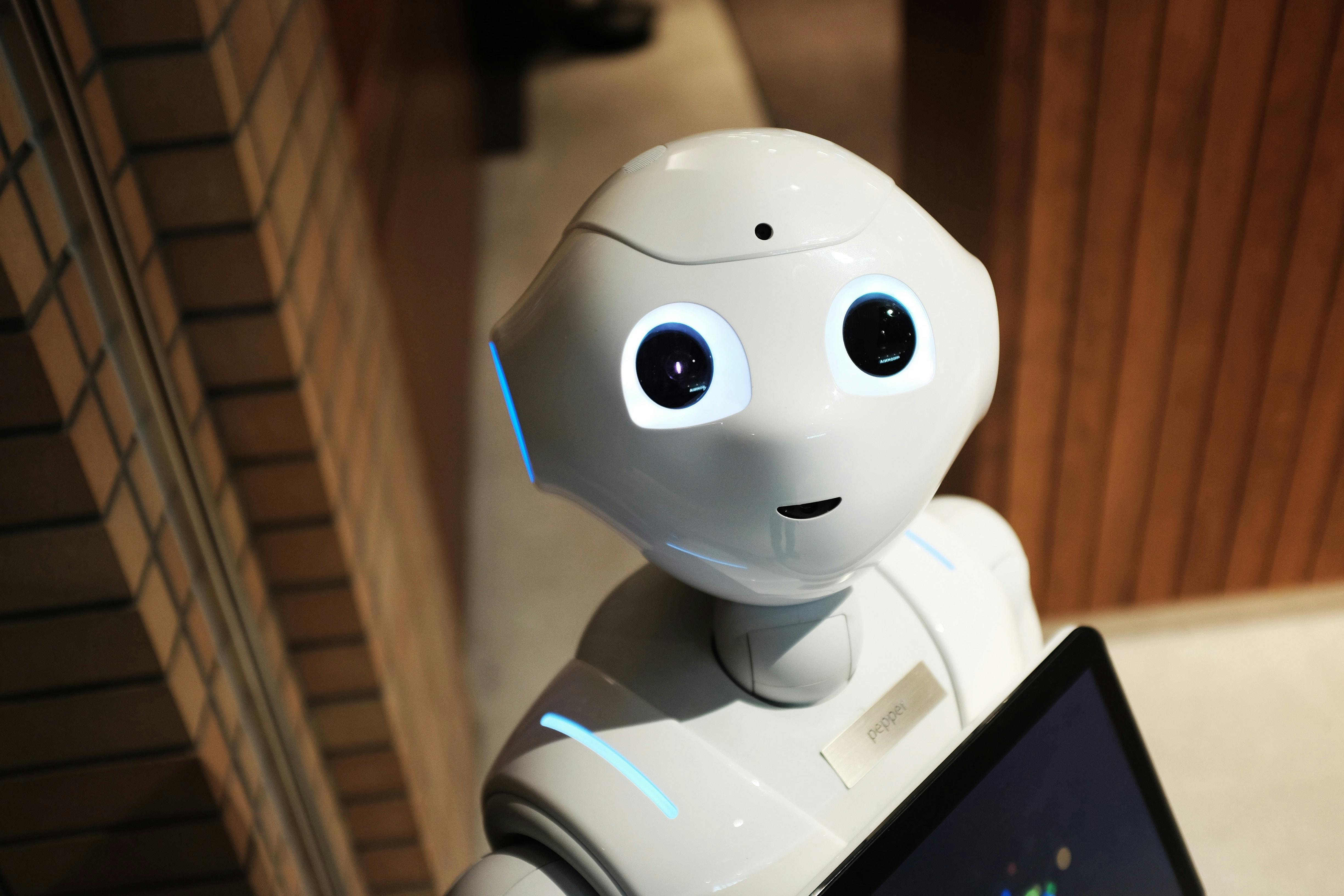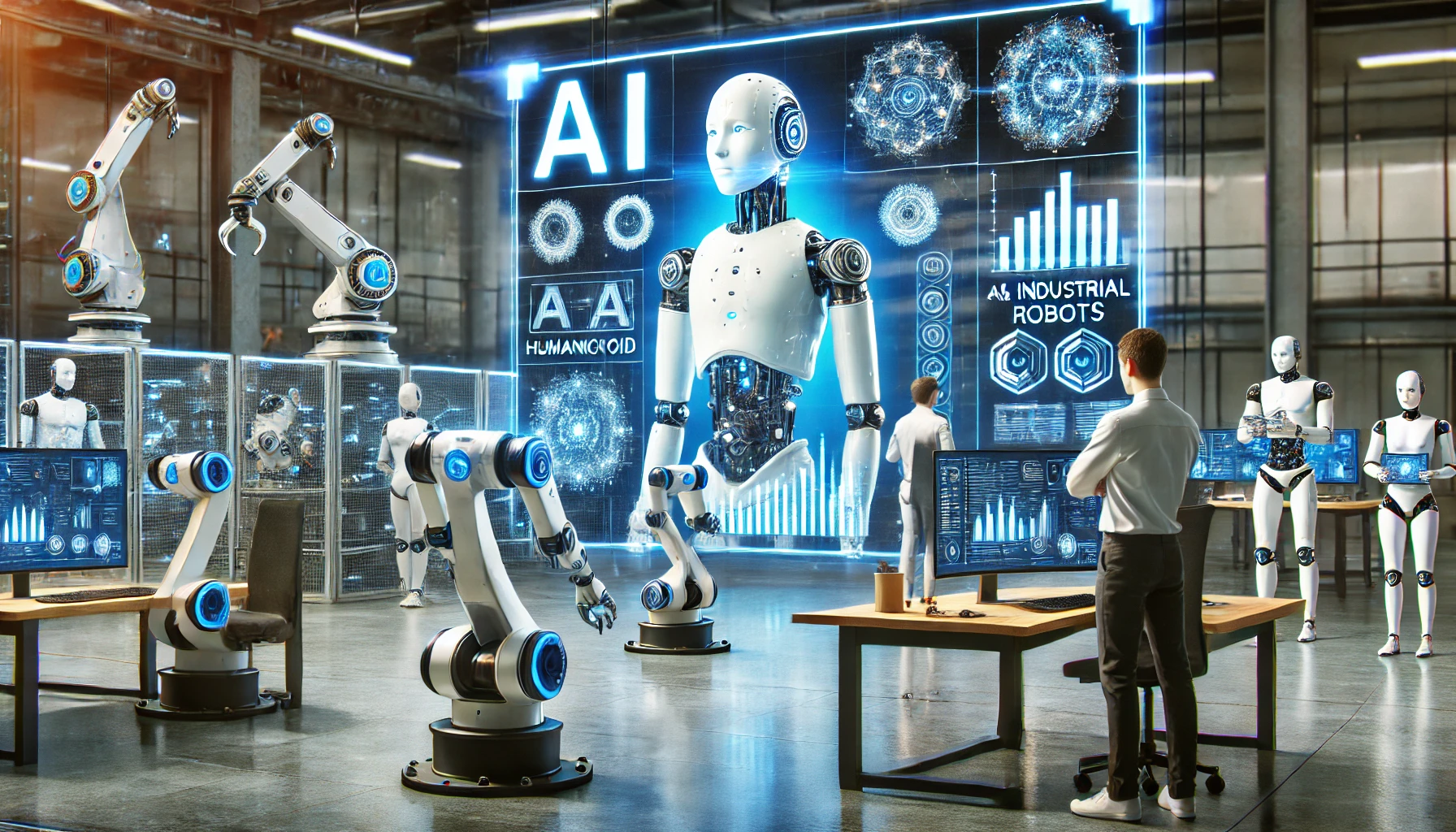Artificial Intelligence (AI) is transforming robotics by enabling machines to learn, adapt, and perform complex tasks with greater efficiency. AI-powered robots are being used in industries, homes, and healthcare to automate processes and assist humans in daily activities. In this article, we will explore how AI is shaping the future of robotics.

Image: Advanced AI-powered robotic system demonstrating human-like capabilities. Photo by Alex Knight from Pexels, licensed under Pexels License.
1. The Role of AI in Robotics
AI enhances robotics by:
Improving automation and precision in manufacturing through computer vision systems and adaptive algorithms that allow robots to handle complex tasks with exceptional accuracy. Modern AI-powered robots can adjust their movements in real-time based on environmental feedback, achieving precision levels impossible with traditional programming.
Enabling robots to learn from experience using machine learning, which allows robotic systems to improve performance over time without explicit reprogramming. Through reinforcement learning, robots can learn optimal strategies for completing tasks by trial and error, similar to how humans learn new skills.
Enhancing human-robot interaction for better assistance through natural language processing, gesture recognition, and emotional intelligence. Advanced robots can now understand verbal commands, recognize faces, interpret human behavior, and respond appropriately to social cues.
Industry Impact: According to the International Federation of Robotics’ 2024 World Robotics Report, the integration of AI has increased industrial robot productivity by an average of 32% while reducing programming and setup time by 58% compared to traditional robotic systems.
2. Best AI-Powered Robots and Applications
A. AI in Industrial and Service Robots
Boston Dynamics AI Robots: Advanced robotics for mobility and automation that can navigate complex terrains, climb stairs, and perform dynamic movements previously impossible for machines. Their Spot and Atlas robots use AI to maintain balance and adapt to unexpected obstacles in real-time.
Fanuc AI-Powered Robotics: Used in automated manufacturing with visual recognition systems that can identify parts, detect defects, and optimize assembly operations. Their latest FIELD system incorporates deep learning to enable robots to improve their own performance by analyzing production data.

Image: AI-powered industrial robots working on an automated manufacturing line. Photo by ThisIsEngineering from Pexels, licensed under Pexels License.
B. AI in Healthcare Robotics
Da Vinci Surgical System: AI-assisted robotic surgery platform that enhances surgeon capabilities with computer vision, motion scaling, and tremor reduction. The system provides surgeons with enhanced precision for minimally invasive procedures, resulting in faster patient recovery times and reduced complications.
Moxi AI Robot: Helps hospital staff with routine tasks like delivering supplies, collecting lab samples, and restocking patient rooms. Using AI for navigation and task planning, Moxi can operate autonomously in busy hospital environments while safely interacting with staff and patients.
C. AI in Home and Personal Robotics
Roomba AI Vacuum: Uses AI to map and clean spaces efficiently through advanced spatial mapping, object recognition, and route optimization. The latest models can identify furniture, remember room layouts, detect high-traffic areas that need extra cleaning, and even avoid pet waste.
ElliQ AI Companion Robot: Provides assistance for elderly individuals through personalized interactions, medication reminders, and cognitive engagement. Using conversational AI and emotional recognition, ElliQ can detect changes in user behavior that might indicate health issues.
“The true breakthrough in robotics isn’t just about making machines that move like us—it’s about creating systems that can learn, adapt, and collaborate with us in meaningful ways. AI is the brain that’s finally catching up with the body we’ve been building.” — Dr. Daniela Rus, Director of MIT Computer Science and Artificial Intelligence Laboratory
3. AI and Human-Robot Collaboration
AI-powered humanoid robots assist in customer service environments like retail stores, hotels, and airports, providing information, processing transactions, and guiding visitors. Robots like SoftBank’s Pepper and Samsung’s EX1 can recognize customer emotions and tailor their responses accordingly.

Image: AI-driven robotic exoskeleton enhancing human capabilities in industrial settings. Photo by Mikhail Nilov from Pexels, licensed under Pexels License.
AI-driven exoskeletons enhance mobility for people with disabilities and provide strength augmentation for workers in physically demanding jobs. Companies like Ekso Bionics and ReWalk are developing systems that use AI to anticipate user movements and provide just-in-time support for natural motion.
AI-enhanced robotic assistants improve workplace efficiency in warehouses, factories, and offices through collaborative robots (cobots) that work alongside humans. These systems, like ABB’s YuMi and Universal Robots’ UR Series, use AI to safely share workspaces with humans while adapting to changing tasks and environments.
Case Study: Toyota’s implementation of AI-powered collaborative robots in their automotive assembly plants resulted in a 20% increase in production efficiency and a 43% reduction in workplace injuries related to repetitive stress and heavy lifting.
4. The Future of AI in Robotics
The robotics industry is poised for even more transformative AI innovations:
AI-powered fully autonomous robots for industries and homes that can operate independently for extended periods with minimal human oversight. Next-generation robots will be able to handle unpredictable environments, make complex decisions, and solve problems creatively—much like humans do.
AI-driven robotic learning systems for self-improving machines that can teach themselves new skills through experimentation and share knowledge with other robots. These systems will accelerate robot capability development through collective learning and could eventually lead to robots that innovate new solutions beyond their original programming.

Image: Next-generation robot demonstrating emotional intelligence and advanced social interaction capabilities. Photo by Alex Knight from Pexels, licensed under Pexels License.
AI-enhanced emotionally intelligent robots for social interactions that can recognize and respond to human emotions in nuanced ways. These robots will support applications in elder care, education, mental health, and customer service where emotional understanding is crucial for effective human-robot relationships.
“We’re entering an era where robots won’t just execute tasks—they’ll collaborate as partners, adapting to our needs and learning from us in real-time. The future isn’t about replacing humans with machines, but about creating symbiotic relationships that enhance human capabilities and quality of life.” — Dr. Ken Goldberg, Professor of Robotics at UC Berkeley
Ethical Considerations in AI Robotics
As AI robots become more autonomous and integrated into society, important ethical questions arise:
Safety and control: Ensuring that increasingly autonomous robots have reliable safety mechanisms and that humans maintain appropriate oversight of critical systems.
Privacy concerns: Addressing the collection and use of data gathered by robots in homes, hospitals, and public spaces.
Labor market impacts: Managing economic transitions as certain jobs are automated while new roles emerge in robot design, maintenance, and supervision.
Robot rights and responsibilities: As robots become more sophisticated, questions about their legal status, liability for actions, and potential rights may become increasingly relevant.
Conclusion: The Collaborative Future of Humans and Robots
AI is revolutionizing robotics by making machines smarter, more adaptable, and more efficient in various fields. From healthcare to home automation, AI-powered robots are enhancing human lives and transforming industries. The most successful implementations are those that leverage AI to create effective human-robot partnerships rather than simply replacing human workers.
The convergence of advanced AI with robotics represents one of the most significant technological revolutions of our time. As these systems continue to evolve, we can expect robots to move beyond repetitive tasks into roles requiring creativity, emotional intelligence, and complex decision-making.
While navigating important questions about safety, ethics, and social impact, the potential for AI-powered robotics to solve challenging problems, increase productivity, and improve quality of life is too significant to ignore.
Explore AI-driven robotics today and witness the future of intelligent machines!
What tasks in your daily life or work would you most want an AI-powered robot to help with? Share your thoughts in the comments below.

